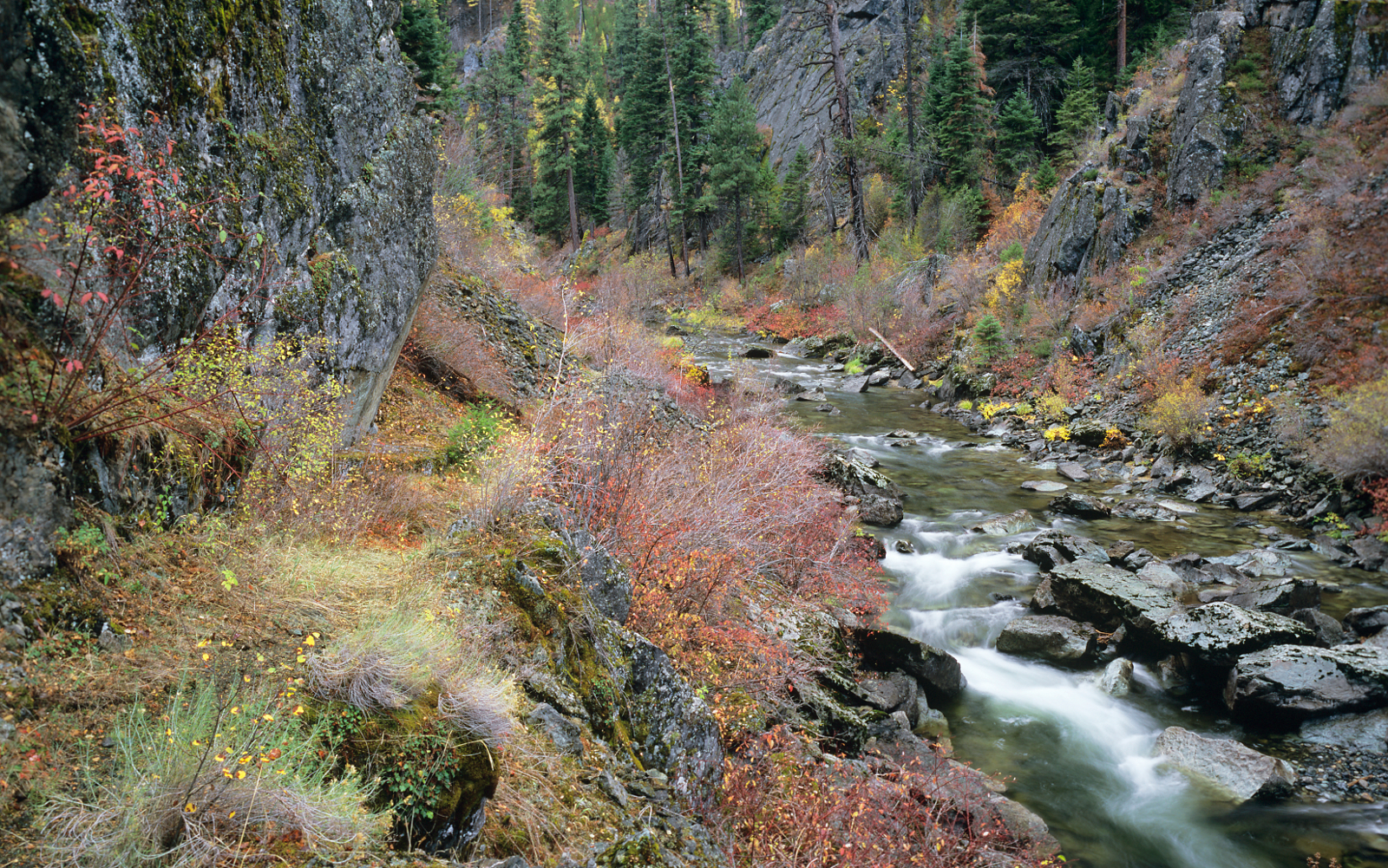
Lone Rock’s right-of-way marked to cut.
by Gabe Scott, In-house Counsel
Lone Rock Timber and BLM, shame on you.
In what looks like a classic timber grab, Lone Rock Timber has demanded rights to log a swath of huge old-growth trees on public, BLM land. Claiming they need a road to access a part of one of their active clearcuts, Lone Rock marked to cut a wide swath of public old growth, and BLM rubber stamped it.
The context is that legacy of frontier land fraud—the checkerboard O&C timberlands. This particular travesty is located up Susan Creek off of the famed North Umpqua River east of Roseburg. The area is naturally spectacular, but the backcountry above the river is largely a giant tree farm for corporate forestry. Every other square-mile section is owned by BLM, the rest by private timberland owners, in a checkerboard pattern. All of it is managed for forestry, and most of it has been clearcut.
The private owners are logging now on a forty-year rotation.
The forest on the chopping block is a 70-150 ft wide swath — about 4 acres — through the kind of ancient forest we dream about. Right up against truly savage clearcuts a mile-square and more, the public stand remains a deep, dark, ancient forest. It’s the sort that, when a grouse hoots, it carries and echoes in that haunting way. My mind longs for a wolf, or at least an eagle or even a raven to call, but none does. This cathedral is an island in a sea of clearcuts.

I counted at least fifteen giant old growth trees marked to cut within Lone Rock’s claimed right-of-way. Fifteen great big mothers, some of whom probably beat Columbus to America.
That’s giving benefit of the doubt on every marked boundary tree, many of which were themselves ancient. And that’s not mentioning the snags, and the many old-but-not-ancient trees, and the gorgeous madrones and great big alders and unexpected, emerald-green meadows.
And in return, Lone Rock accesses a tiny sliver of plantation abutting that beautiful stand. I counted rings on one typical stump —yep, forty on the nose.
Lone Rock and BLM claim they have the legal right to do this because they want a wide road and big turnaround to more easily access one of their active plantation clearcutting units. There is a rock outcrop, they say. It’s hard to get around with these new machines, they say.
Big hole in their story—the trees they can’t get to, they were able to get to to clearcut forty years ago. That’s how it’s plantation now.
Further investigation by intrepid sleuths uncovered Lone Rock sharing maps of existing roads to the very stand.
I visited the site last Thursday and what I saw was a company going hogwild, clearcutting the snot out of a hillside, having no trouble at all yanking the cut trees onto trucks to haul to market. I saw these roads with my own eyes. I listened to their machines work all day tearing up the hill just below the stand they say they can’t access.
 How a logging company that logged a stand forty years ago thinks they can’t do it today is an interesting story. If you wonder where the logging jobs went, here’s your answer.
How a logging company that logged a stand forty years ago thinks they can’t do it today is an interesting story. If you wonder where the logging jobs went, here’s your answer.
Forty years ago they had cable yarders and tractors and skylines and choker setters and fallers who would scramble around the hill in cork boots to do the job.
Now it’s done by a couple guys pulling levers in air-conditioned boxs. Logging by machine is more profitable. What used to take a crew now only takes one.
Progress!
The public accommodates that job-killing mechanization by letting them plough more and more roads through our old-growth reserves. But sure, go ahead, blame the spotted owl for economic trouble in timber country.

Lone Rock’s clearcut in fore-ground, BLM land up the hill. The stand just above the parked yarders is the plantation Lone Rock claims they can’t access.
Lone Rock can cry us a river about access to their land.
Those very same right-of-way agreements lock us, the public, out of accessing our land. The deal is so slanted that even BLM employees in the field couldn’t take a spur to a nice spot for a picnic—they can only drive the roads when they are working on a logging project.
They say this is just the way it is, but that answer is not good enough for us.
Cascadia and other local activists have been dogging this outrageous proposal. We’re doing what we can to save this forest, but honestly it is an uphill fight. Presence of spotted owls, wet weather, better access in other ways… none of it seems to matter at all to them. We’ve implored BLM officials directly, but they claim their hands are tied by reciprocal right-of-way agreements.
We hold out hope that Lone Rock will do the right thing and log their trees the old fashioned way. But, if the best we can get out of this situation is to learn a lesson, then lets learn the lessons.
The lesson is that BLM’s interpretation of these reciprocal right of way agreements on tens of thousands of acres of public and private forestry land amounts to a blank check for private logging companies. All the careful forest planning BLM does, can be undone in a moment at the whim of a logging company who claims they want to build a road. The situation is rich with potential for fraud, and BLM is uninterested in policing it.
The sad legacy of the O&C land frauds continues.
(All photos of the contested area by Cascadia Wildlands)




I called BLM yesterday. I said I wanted to know if any surveys of birds' nests had been done. Mr. Rossbach kept saying this "timber grab" was legal. He said I could request evidence of a survey, that I didn't need to go to his office. I think I'll go anyway.